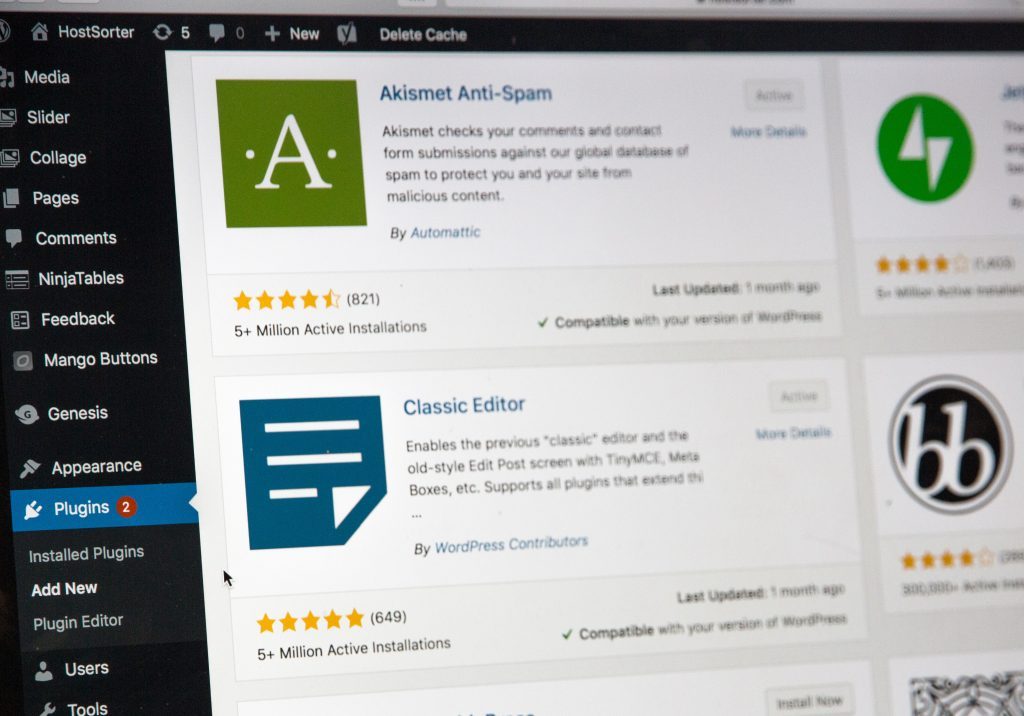Don’t Panic, We’ve Got You Covered…
Waking up to a Google algorithm update can feel like walking into a surprise exam. Did your website’s rankings shift? Is your traffic on the rise—or has it taken a nosedive? Before you panic or pop the champagne, let’s break down how to handle these updates strategically and calmly.
Don’t Rush to Conclusions
The first rule after a Google algorithm update? Patience. Google updates often roll out over days or even weeks, so initial fluctuations aren’t always the full story. It’s tempting to react right away, but making hasty changes can do more harm than good. Monitor your website’s performance over a few weeks to get a clearer picture of the update’s impact.
Pro Tip: Use tools like Google Analytics and Google Search Console to track traffic trends, keyword rankings, and user behaviour before and after the update.
Assess the Damage (Or Celebrate the Wins)
Once the dust settles, it’s time to evaluate how your site has been affected. Here’s what to check:
- Keyword Rankings: Look for drops or gains in key terms. Focus on shifts for high-priority keywords.
- Traffic Sources: Has your organic traffic increased, decreased, or stayed steady?
- Affected Pages: Identify which specific pages gained or lost rankings. Patterns here can reveal what the update targeted.
Pro Tip: If you notice significant ranking drops, don’t despair. It’s an opportunity to identify weaknesses in your SEO strategy and improve.
Research the Update
Not all algorithm updates are created equal. Some focus on content quality (like the Helpful Content Update), while others target technical issues, backlinks, or spam. Dive into industry news, blogs, and forums to understand the purpose of the latest update and how it aligns with your site’s performance.
Keep Content Quality Front and Centre
No matter what type of update Google rolls out, one thing remains consistent: quality matters. Reassess your content to ensure it’s:
- Relevant and useful to your audience.
- Well-researched, accurate, and up-to-date.
- Free of spammy or keyword-stuffed language.
Focus on delivering value to users, not just ranking for search engines.
Pro Tip: Content that solves problems, answers questions, or provides unique insights is algorithm-proof gold.
Review Your Technical SEO
Sometimes, drops in rankings are less about content and more about your site’s technical health. Check for:
- Page Speed: Is your site loading quickly? Slow pages can hurt rankings.
- Mobile-Friendliness: With mobile-first indexing, responsive design is non-negotiable.
- Crawlability: Ensure search engines can easily access and index your content.
- Broken Links: Fix 404 errors or redirect outdated URLs to improve user experience and SEO.
Pro Tip: Run an SEO audit using tools like SEMrush, Ahrefs, or Screaming Frog to uncover technical issues.
Examine Your Backlink Profile
Backlinks are still a ranking factor, but not all links are created equal. Algorithm updates often target spammy or low-quality backlinks, so use tools like Ahrefs or Moz to analyse your profile. Remove or disavow any toxic links and focus on earning high-quality, relevant links moving forward.
Keep Your E-A-T in Check
E-A-T (Expertise, Authoritativeness, Trustworthiness) is a cornerstone of Google’s quality guidelines. Strengthen your site’s E-A-T by:
- Highlighting Credentials: Ensure authors and contributors are credible, and showcase their expertise.
- Citing Sources: Link to authoritative references where relevant.
- Building Trust: Add secure payment options, privacy policies, and clear contact details to enhance user confidence.
Pro Tip: For industries like finance, health, or law (YMYL—Your Money or Your Life topics), demonstrating trust and authority is critical.
Avoid Reactionary Overhauls
If your rankings dip, resist the urge to overhaul everything at once. Drastic changes can confuse search engines and users alike. Instead, make measured improvements based on your findings. Small, consistent updates signal to Google that your site is evolving with user needs in mind.
Keep Up With SEO Best Practices
Algorithm updates are a reminder to stay proactive with your SEO strategy. Regularly optimize your site for:
- User Intent: Ensure your content aligns with what users are genuinely searching for.
- Featured Snippets: Optimize for position zero by answering questions directly and concisely.
- Structured Data: Use schema markup to help Google understand your content.
Pro Tip: SEO isn’t a set-it-and-forget-it task—it’s an ongoing process. Commit to continuous learning and adaptation.
Engage With the SEO Community
The SEO world thrives on shared knowledge. Join forums, follow industry experts on social media, and subscribe to newsletters. Discussions about algorithm updates often provide valuable insights and strategies tailored to your niche.
Prepare for the Next Update
Here’s the truth: Google will always update its algorithms. Instead of fearing the next change, future-proof your site by focusing on a user-first approach. When your content is valuable, your site is secure, and your SEO is solid, you’ll weather updates with confidence.
Final Thoughts
Google algorithm updates can feel like curveballs, but they’re also opportunities to refine your strategy and enhance your website’s value. Stay informed, focus on quality, and remember—SEO is a marathon, not a sprint. By consistently prioritizing your audience’s needs, you’ll build a site that stands the test of time (and algorithms).









